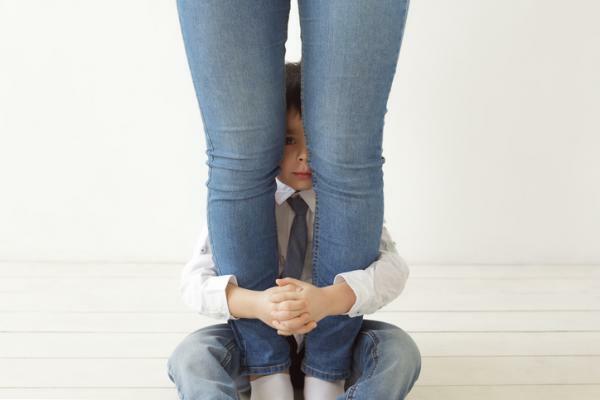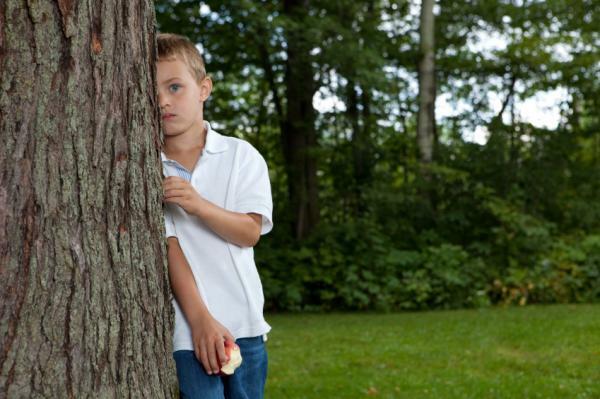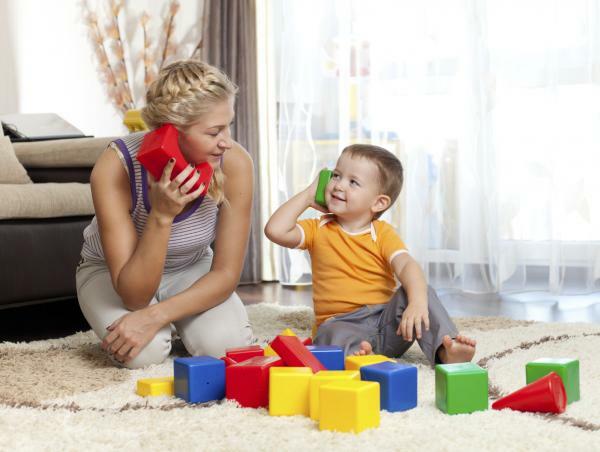
If you are at a birthday party and you notice that your child, instead of playing with the other children, clings to your leg and cries, and never seems to relax or enjoy being with other children, it may be a child shy. While there are children who love these types of parties to see other children and play with them, there are others who find these situations very stressful. They can be very talkative with their family, but they feel insecure when they leave the house. Although it seems that shy children are antisocial, they are not, they have an interest in others, but anxiety gets in their way. In this Psychology-Online article, we are going to show you some guidelines to follow so you can know how to help a shy and insecure child.
Index
- What is shyness?
- Shy and insecure children: characteristics
- Tips to help insecure and shy children
What is shyness?
Shyness is a normal and adaptive response that allows us to face new social situations, it is a tendency to feel uncomfortable, clumsy and inhibited when in the company of other children, it is fear of doing something out of insecurity and distrust. It involves a mixture of emotions such as fear and interest, tension and kindness, which can be accompanied by an increase in heart rate. We recognize a timid child by a downward, elusive look, and a certain reluctance in his speech (shaky and hesitant) and in his body posture.
Feeling shy in new situations is normal if it decreases as our sense of control over the situation increases. The problem appears when the child has excessive shyness that does not diminish over time and is generalized, that is, it occurs in various areas of the child's life.

Shy and insecure children: characteristics.
Very shy and insecure children may have poor social skills or low self-esteem. Shy children have been found to be less competent at initiating play with others.
When asked about themselves they tend to consider themselves inferior, less friendly and more passive than peers who are not shy, this can affect their way of behaving with others and, therefore, the perceptions of others, since they tend to consider them less friendly and less nice.
For these reasons, shy children may be rejected by their peers and have access to fewer opportunities to improve their social interactions.
In the following Psychology-Online article, we also answer the question of why is it difficult for my child to play with other children.
Tips to help insecure and shy children.
Helping a child overcome shyness and insecurity is not something easy, it needs a lot of support and that respect his time, if you force what you want to achieve, your child will still resist more. Here are a series of tips that will make it easier for your child to overcome excessive shyness and feel more comfortable:
- Give it time to prepare: Your child's anxiety will decrease if he knows what he expects in each of the different situations. For example, if your son has a friend's birthday, days before you can take him to his friend's house. friend to get to know the site, interact with more people and, thus, the day of the party will go with more confidence.
- Listen to you patiently: of him encouraging you to talk about his fears and trying to empathize with his experience without belittling his concerns. Tell him about situations in which the same thing happened to you.
- Build your confidence: Shy children may have low self-esteem and feel that they will not be accepted by others, so they avoid social situations. Therefore, it is necessary to reinforce them for what they do well and make them feel capable and autonomous without overprotecting them.
- Remind him of moments in which he faced new situations and succeeded. For example, if she has a friend's birthday, he remembers a party where she had a good time with other children.
- Practice at home: You can play a game by posing different situations, such as what to say when you meet a child at school. Swapping roles can help your child understand both sides of social interaction.
- Work social skills: there are psychologists who suggest teaching strategies, such as: can I play too?, and techniques to start a conversation. It consists of giving them opportunities to put into practice what has been practiced with the exchange of roles, for example, inviting a friend to play at home so that they can gain confidence. As he evolves, playing with new groups can help him start over from a position that is more comfortable for him.
- End pessimism: shy behavior is often related to negative thoughts (other children will not like me) that make their self-esteem low. Help your child reduce the critical messages he says to himself by replacing them with positive reinforcement (for example, you played very well with that child).
- If you notice that your child has excessive shyness that becomes highly disabling, consult the psychologist.
We must remember that shyness is not bad in its entirety, there are children who do not need to be the focus of attention. Although we tend to think of it as a social disadvantage, some qualities of shyness are valued as something positive such as being modest, reserved, and often become sensitive adults and empathic.

This article is merely informative, in Psychology-Online we do not have the power to make a diagnosis or recommend a treatment. We invite you to go to a psychologist to treat your particular case.
If you want to read more articles similar to How to help a shy and insecure child, we recommend that you enter our category of Socialization problems.
References
Anderson, Emily. Shyness in children [online]. In: Bartletta, John (Editor); Bond, Jan (Editor). Home Therapist: A Practical, Self-help Guide For Everyday Psychological Problems. Bowen Hills, QLD: Australian Academic Press, 2012: 144-146.
Mota, A. (2009). Childhood Shyness. Innovation and educational experiences.


